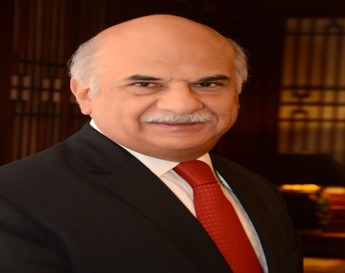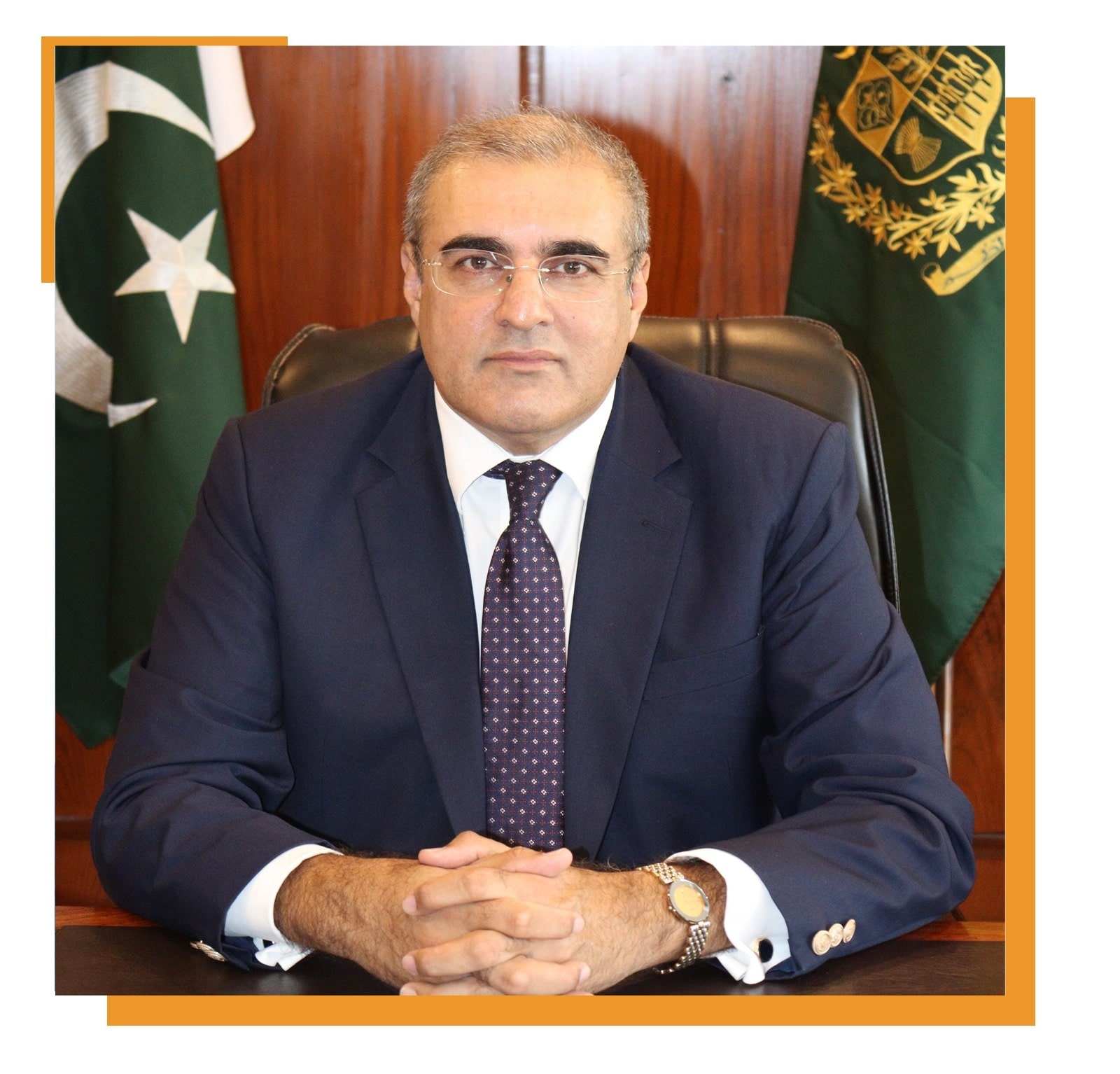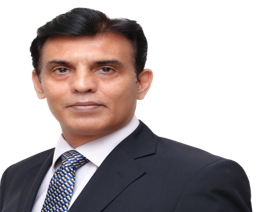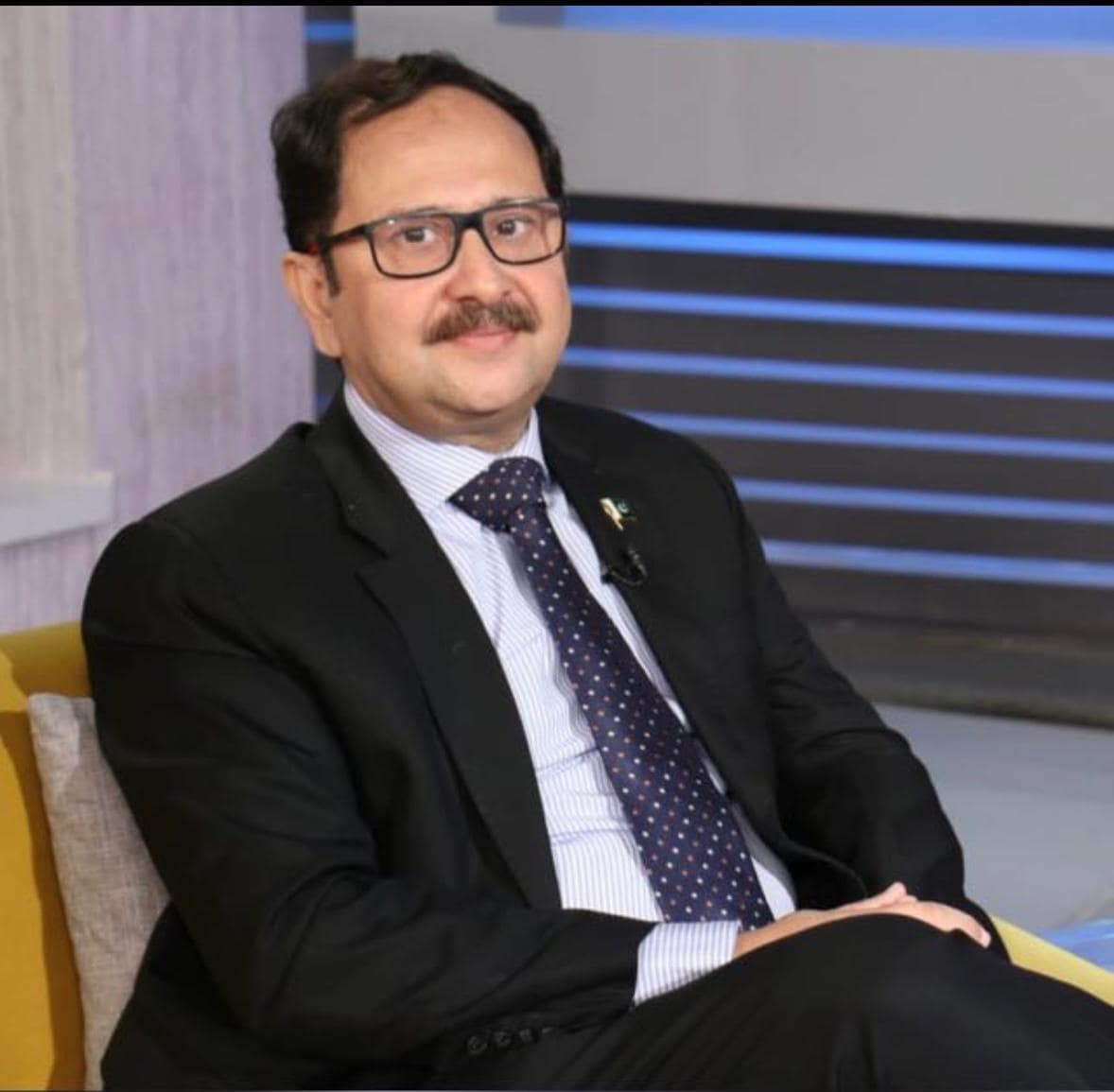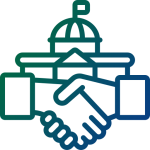Pakistan Climate Profile
Who we are
Thematic areas
Management Structure
Global Linkages
Pakistan Climate Profile
Climatic variability of Pakistan has already exposed its economy and people to extreme challenges and damages. The losses from natural disaster accumulated to approximately $ 24 billion from 2005 till 2015. Studies show that extreme weather and climate induced disasters are likely to become more frequent and intense in the near future. Urgent and focused action on building resilience is imperative this must be done in an inclusive and sustainable manner.
Vission
Mission
Objectives
Strategic Framework of GoPs
Vision
To Make Pakistan a Natural Disaster Resilient Country
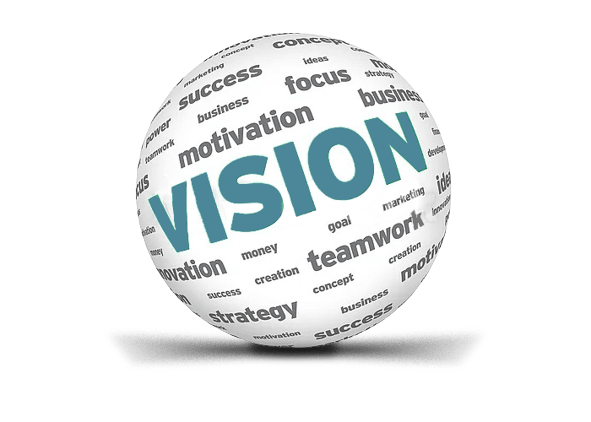
Mission
Reducing the socio-economic and fiscal vulnerability of the country and its population to natural hazards by prioritizing and financing investments in Disaster Risk Reduction and preparedness, that have high economic benefits, taking into account climate change, as well as disaster risks and their impacts

Core Objectives
Establishment of National Disaster Risk Management Fund
Investment to Reduce Vulnerabilities against National Disaster
Improved Fiscal Management of National Disaster
Strategic Objectives
- Income from endowment fund to finance NDRMF establishment and operating expenses
- Balance earning from endowment fund to be utilized for funding projects
- Release of the text tranche of US$ 250-300 Million from ADB is being processed (2020-2023) by ADB
- Independent financial management procedures and systems, satisfying all donor requirements/needs, ultimately leading to a full autonomous entity to attract funding from other donors are functional
- Explore the possibility of obtaining dormant funds from different projects of the Government
- Tap Additional funding sources, within and outside the country
- FIP accreditation and project selection criteria fully operationalized
- All procedures for project approval simplified for fast track approvals
- Institutionalize development and operational processes in line with best international practices
- Develop a central repository of knowledge on DRR & DRF
- Ensure environment, gender and social safeguard policies are mainstreamed in all the projects
- to develop , fine tune, customize, mature and operationalize own procurement, financial management , audit and business processes, monitoring and evaluation policies and practices to a level which will be acceptable to all development partners
- Creating a stable and productive organization
- Ensuring compliance of all the applicable legislations and loan covenants with improved coordination with regulators, donors and other stakeholders
- National and subnational emergency response plans are developed
- A MHVRA (including climate change and gender-related vulnerabilities) is completed in 20 vulnerable cities and/or district
- CBDRM plans are completed in 50 vulnerable union councils or urban centers
- At least 300 km of new or retrofitted flood protection infrastructure financed by the NDRMF are constructed
- An Additional 500 public buildings financed by the NDRMF (in the social sector) are made safe and resistant to multiple hazards
- Enhance the geographic coverage area of early warning systems by 10 %
- Critical mass of Projects covering all geographic regions and thematic interventions through a balanced mix of FIPs( Both public and non-public) are completed.
- Working with existing implementation partners that are already accredited with international and national agencies.
- Projects with high level of preparedness, impact and visibility to get priority.
NDRMF is in line with existing acts, policies and strategies formulated by the GoP to fulfill the global obligations and to cope with the challenges emerged as a result of multiple natural catastrophes.
- National Flood Protection Plan NFPP-IV (2016-2025)
- National Flood Protection Plan NFPP-IV (2016-2025)
- Disaster Risk Reduction Policy (2013)
- National Climate Change Policy (2021)
- Government of Pakistan Vision (2025)
- Ecosystem Restoration Initiative (ESRI)
- Pakistan Preparatory Response Plan (PPRP)
- Post-2015 Sendai Framework for Disaster Risk Reduction (2015-2030)
- Sustainable Development Goals (SDGs)
- Nationally Determined Contributions (NDCs)
- Paris Agreement on Climate Change
Focused Interventions
The resources pooled under the National Disaster Risk Management Fund (NDRMF) are dedicated to supporting the implementation of the National Disaster Management Plan (NDMP) 2012-2022 and National Flood Protection Plan (IV) (NFPP-IV) 2015-2025. The fund will finance projects relevant to given targets. However, phase-based interventions will be finalized based on imminent needs and demands.
climate change
Disaster Risk Resilience
Disaster Risk Finance
“Pakistan Hydro-Meteorological and Climate Services Project”
- Component-1
- Component-2
Hydro-Meteorological and Climate Services ($60 Million)
Objective:
Improve capability and performance through institutional strengthening of PMD to use the data (meteorological and hydrological) for decision making
Project Area:
Islamabad Capital Territory, Punjab, Sindh, Balochistan and KPK provinces of Pakistan
Nature-based Solutions and Climate Adaptation ($120 Million)
Objective:
Project Area:
Nature-based Solutions and Climate Adaptation
Sub-Components
- 2.1: Promotion of Nature-based Solutions
- 2.2: Community resilience to climate change
- 2.3: Innovation on climate smart technology
- 2.4: Project management and capacity building
Promotion of Nature Based Solutions
Subcomponent 2.1:
7 Thematic Areas:
- Afforestation
- Integrated water management
- Biodiversity Conservation & Mitigating Land Degradation
- Conserving Marine Life, Marine Protected Areas and Promoting Blue Economy
- Promoting Eco-tourism
- Clean Mobility
- Clean Green Pakistan
Disaster Risk Resilience Thematic Areas
Disaster Risk Financing Thematic Areas
Board of Directories
Sub Committees
CEO
Team
Organogram
The overall functions of the BOD are as follows:
- Determine the direction and scope of activities of the NDRMF
- Ensure that the operations of the NDRMF are governed by sound management principles
- Ensure that resources of NDRMF are used only for the intended purposes
- Ensure that fiduciary care is exercised in use of the NDRMF’s resources
- Ensure that resources of the NDRMF are provided to well-managed institutions, and financial assistance to partner institutions is based on principles of cost sharing and project/proposal viability.
Following good management practice, the BOD constituted sub-committees responsible for specialized areas which include:
| Mandate | Composition |
| NDRMF is a government-owned not-for-profit institution registered with the Securities & | NDRMF is a government-owned not-for-profit institution registered with the Securities & |
| Mandate | Composition |
| NDRMF is a government-owned not-for-profit institution registered with the Securities & | NDRMF is a government-owned not-for-profit institution registered with the Securities & |
| Mandate | Composition |
| NDRMF is a government-owned not-for-profit institution registered with the Securities & | NDRMF is a government-owned not-for-profit institution registered with the Securities & |
| Mandate | Composition |
| NDRMF is a government-owned not-for-profit institution registered with the Securities & | NDRMF is a government-owned not-for-profit institution registered with the Securities & |
| Mandate | Composition |
| NDRMF is a government-owned not-for-profit institution registered with the Securities & | NDRMF is a government-owned not-for-profit institution registered with the Securities & |
| Mandate | Composition |
| NDRMF is a government-owned not-for-profit institution registered with the Securities & | NDRMF is a government-owned not-for-profit institution registered with the Securities & |
| Mandate | Composition |
| NDRMF is a government-owned not-for-profit institution registered with the Securities & | NDRMF is a government-owned not-for-profit institution registered with the Securities & |
The Chief Executive Officer (CEO) recommended by the BOD and appointed by the Government, heads the management team of the Fund. The management team led by the CEO and supported by senior executive team reports to the BOD and is responsible for managing the day to day affairs and operations of the Fund.
The CEO is supported by four key departments namely Projects and Operations (P& OG), Quality Assurance Group (QAG), Financial Management Group (FMG), Support Services Group (SSG).
The four key departments have the following tasks to undertake:
Projects and Operations (P & OG): The unit will focus on the core business areas of the Fund including Disaster Risk Reduction (DRR), preparedness (early warning, contingency planning), early recovery and Disaster Risk Financing (DRF). It will carry the core responsibility of establishing and financing partnerships, technical review of investments to be made by the Fund and relationship management with recipient organizations. The selection of FIPs would be undertaken by transparent Eligibility Criteria.
Quality Assurance Group (QAG): This unit will look after monitoring and evaluation, management information systems, safeguards, and gender functions.
Financial Management Group (FMG): This team will manage finance, accounts and treasury function of the Fund.
Support Services (SSG): The unit will support human resources management, administration, procurement, media and communication and legal activities of the Fund, apart from housing the information technology backbone of the Fund.
Chief Executive Officer
Mr. Bilal Anwar is an International Climate Policy and Sustainable Development Professional with a reputation as a leading technical expert, with over two decades of diverse experience in the field of climate change.

17-01-2022
-
Since 17 January 2022, Mr. Anwar has been appointed as the CEO of the National Disaster Risk Management Fund, registered under Section 42 of the Companies Act, to provide funding to government and non-government entities, in undertaking risk reduction activities, against natural calamities and climate-induced risks, to make Pakistan resilient against disasters.
-
His core areas of technical expertise are climate action, climate finance, disaster risk management, in which he has worked extensively on designing, operationalization of Climate Investment and Disaster Management Funds for Pakistan as well as internationally,
-
He holds extensive management expertise in Climate Change and Carbon strategies in the corporate sector and program and operational management for donor funded based projects in several countries.
-
During his diverse experience in the field of climate change for over twenty years, Mr. Anwar has held a number of key positions at International Climate Change and Disaster Management institutions and assisted in mobilizing funds towards addressing its climate change and disaster related challenges.
-
His earlier experiences include as General Manager- The Commonwealth Climate Finance Access Hub, Port Louis, Republic of Mauritius, successfully rolling out the technical support and climate finance mobilization programs of worth USD 700 million in 15 countries.
-
Also setting up of international carbon regime of CDM in the United Nations Climate Change Secretariat, in Bonn, Germany and served in the private sector in UK and USA.
UN SDGs
Sendai Framework
Paris Agremeent

UN Sustainable Development Goals (2030) with Targets related to Disaster Risk
Targets
NDRMF's contribution
 |
1.5 By 2030, build the resilience of the poor and those in vulnerable situations and reduce their exposure and vulnerability to climate-related extreme events and other economic, social and environmental shocks and disasters. | At least 3 million people who are highly vulnerable to the negative impacts of multiple natural hazards are safe and have become more resilient against the direct and indirect impacts of multiple natural hazards. |
 |
4.a Build and upgrade education facilities that are child, disability and gender sensitive and provide safe, non-violent, inclusive and effective learning environments for all. | 500 public buildings (including schools) financed by the NDRMF are made safe and resistant to multiple hazards. |

|
5.1 End all forms of discrimination against all women and girls everywhere. 5.5 Ensure women's full and effective participation and equal opportunities for leadership at all levels of decision- making in political, economic and public life. 5. c Adopt and strengthen sound policies and enforceable legislation for the promotion of gender equality and the empowerment of all women and girls at all levels. | At least 40-50% women and girls out of the total beneficiaries who are highly vulnerable to the negative impacts of multiple natural hazards are made safe and have become more resilient against the direct and indirect impacts of multiple natural hazards.A gender-sensitive national DRF strategy and two gender inclusive DRF instruments developed. |
 |
6.6: By 2020, protect and restore water-related ecosystems, including mountains, forests, wetlands, rivers, aquifers and lakes. | NDRMF is financing water conservation structures, drought mitigation schemes, small dams and reservoirs. |
 |
9.1 Develop quality, reliable sustainable and resilient infrastructure, including regional and trans-border infrastructure, to support economic development and human well-being, with a focus on affordable and equitable access for all. | 300 kilon new or retrofitted flood protection infrastructure financed by NDRMF are constructed. As a result, economic development in agricultural sector can be sustained. NDRMF is financing structures developed for land stabilization. |
 |
11.5 By 2030, significantly reduce the number of deaths and the number of people affected and substantially decrease the direct economic losses relative to global gross domestic product caused by disasters, including water-related disasters, with a focus on protecting the poor and people in vulnerable situations. 11.b By 2020, substantially increase the number of cities and human settlements adopting and implementing integrated policies and plans towards inclusion, resource efficiency, mitigation and adaptation to climate change, resilience to disasters, and develop and implement, in line with the Sendai Framework for Disaster Risk Reduction 2015-2030, holistic disaster risk management at all levels. 11.c: Support least developed countries, including through financial and technical assistance, in building sustainable and resilient buildings utilizing local materials. | At least 3 million people who are highly vulnerable to the negative impacts of multiple natural hazards are safe and have become more resilient against the direct and indirect impacts of multiple natural hazards. 500 public buildings financed by the NDRMF (in the social sector) are made safe and resistant to multiple hazards. 300 kilometer of new or retrofitted flood protection infrastructure financed by NDRMF are constructed. Strengthening of capacities and establishing organizations for disaster risk reduction and management/emergency response at the national, provincial, district and community level. Development of Disaster Risk Management Plans (including urban disaster management plans) for mainstreaming DRR at the national, provincial, district and community level, and DRR Policies for National Development Plan and National Poverty Reduction Strategy, and Sectoral Guidelines. |
 |
13.1 Strengthen resilience and adaptive capacity to climate-related hazards and natural disasters in all countries. 13.2 Integrate climate change measures into national policies, strategies and planning. 13.3 Improve education, awareness- raising and human and institutional capacity on climate change mitigation, adaptation, impact reduction and early warning. 13.b Promote mechanisms for raising capacity for effective climate change- related planning and management in least developed countries, including focusing on women, youth and local and marginalized communities. | CBDRM plans are completed in fifty (50) vulnerable union councils or urban centers. MHVRA including (climate and gender related vulnerabilities) is completed in twenty (20) vulnerable cities or districts. Installation of early warning systems to expand geographic coverage by 10%. Initiatives undertaken to strengthen capacities of NDMA and PDMAs in developing disaster response plans (mainstreaming gender, and climate). DRR policies at the national & provincial level (mainstreaming DRR& climate change). |
 |
15.3 By 2030, combat desertification, restore degraded land and soil, including land affected by desertification, drought and floods, and strive to achieve a land degradation-neutral world. | NDRMF is financing water conservation structures, drought mitigation schemes, small dams and reservoirs. |
The Sendai Framework for Disaster Risk Reduction 2015-2030 (Sendai Framework) is the first major agreement of the post-2015 development agenda, with seven targets and four priorities for action.
It wasendorsed by the UN General Assembly following the 2015 Third UN World Conference on Disaster Risk Reduction (WCDRR).
The Sendai Framework is a 15-year, voluntary, non-binding agreement that recognizes that the State has the primary role to reduce disaster risk but that responsibility should be shared with other stakeholders including local government, the private sector, and other stakeholders. It aims for the following outcome:
The substantial reduction of disaster risk and losses in lives, livelihoods, and health and in the economic, physical, social, cultural and environmental assets of persons, businesses, communities, and countries.
Prevent new and reduce existing disaster risk through the implementation of integrated and inclusive economic, structural, legal, social, health, cultural, educational, environmental, technological, political and institutional measures that prevent and reduce hazard exposure and vulnerability to disaster, increase preparedness for response and recovery, and thus strengthen resilience.
The substantial reduction of disaster risk and losses in lives, livelihoods and health and in the economic, physical, social, cultural and environmental assets of persons, businesses, communities and countries.
- Priority 1: Understanding disaster risk
Disaster risk management needs to be based on an understanding of disaster risk in all its dimensions of vulnerability, capacity, exposure of persons and assets, hazard characteristics and the environment - Priority 2: Strengthening disaster risk governance to manage disaster risk
Disaster risk governance at the national, regional and global levels is vital to the management of disaster risk reduction in all sectors and ensuring the coherence of national and local frameworks of laws, regulations and public policies that, by defining roles and responsibilities, guide, encourage and incentivize the public and private sectors to take action and address disaster risk - Priority 3: Investing in disaster risk reduction for resilience
Public and private investment in disaster risk prevention and reduction through structural and non-structural measures are essential to enhance the economic, social, health and cultural resilience of persons, communities, countries and their assets, as well as the environment. These can be drivers of innovation, growth and job creation. Such measures are cost-effective and instrumental to save lives, prevent and reduce losses and ensure effective recovery and rehabilitation - Priority 4 Enhancing disaster preparedness for effective response, and to «Build Back Better» in recovery, rehabilitation and reconstruction
Experience indicates that disaster preparedness needs to be strengthened for more effective response and ensure capacities are in place for effective recovery. Disasters have also demonstrated that the recovery, rehabilitation and reconstruction phase, which needs to be prepared ahead of the disaster, is an opportunity to «Build Back Better» through integrating disaster risk reduction measures. Women and persons with disabilities should publicly lead and promote gender-equitable and universally accessible approaches during the response and reconstruction phases
- Primary responsibility of States to prevent and reduce disaster risk, including through cooperation
- Shared responsibility between central Government and national authorities, sectors and stakeholders as appropriate to national circumstances
- Protection of persons and their assets while promoting and protecting all human rights including the right to development
- Engagement from all of society
- Full engagement of all State institutions of an executive and legislative nature at national and local levels
- Empowerment of local authorities and communities through resources, incentives and decisionmaking responsibilities as appropriate
- Decision-making to be inclusive and risk-informed while using a multi-hazard approach
- Coherence of disaster risk reduction and sustainable development policies, plans, practices and mechanisms, across different sectors
- Accounting of local and specific characteristics of disaster risks when determining measures to reduce risk
- Addressing underlying risk factors cost-effectively through investment versus relying primarly on postdisaster response and recovery
- «Build Back Better» for preventing the creation of, and reducing existing, disaster risk
- The quality of global partnership and international cooperation to be effective, meaningful and strong
- Support from developed countries and partners to developing countries to be tailored according to needs and priorities as identified by them
Sustainable Development Goals
The Sustainable Development Goals are the blueprint to achieve a better and more sustainable future for all. They address the global challenges we face, including those related to poverty, inequality, climate, environmental degradation, prosperity, and peace and justice. The Goals interconnect and in order to leave no one behind, it is important that we achieve each Goal and target by 2030. Out of 17 SDGs, followings directly relate to disaster reduction:
-
GOAL 9:
Build resilient infrastructure, promote inclusive and sustainable industrialization and foster innovation
-
GOAL 11:
Make cities and human settlements inclusive, safe, resilient and sustainable
-
GOAL 13:
Make cities and human settlements inclusive, safe, resilient and sustainable
Sendai Framework for Disaster Risk Reduction 2015-2030
The Sendai Framework for Disaster Risk Reduction 2015-2030 (Sendai Framework) is a 15-year, voluntary, non-binding agreement which recognizes that the Government has the primary role to reduce disaster risk but that responsibility should be shared with other stakeholders including local government, the private sector, and other stakeholders.
It aims for the following outcome:
- The substantial reduction of disaster risk and losses in lives, livelihoods, and health and in the economic, physical, social, cultural and environmental assets of persons, businesses, communities, and countries.
The Sendai Framework is the successor instrument to the Hyogo Framework for Action (HFA) 2005-2015: Building the Resilience of Nations and Communities to Disasters. It is the outcome of stakeholder consultations initiated in March 2012 and inter-governmental negotiations held from July 2014 to March 2015. It is the first major agreement of the post-2015 development agenda, with seven targets and four priorities for action.
Understanding Disaster Risk
Strengthening Disaster Risk Governance to Manage Disaster Risk
Sendai
Framework
Investing in Disaster Risk Reduction for Resilience
Enhancing disaster
preparedness for
effective response and
to "Build Back Better" in
recovery, rehabilitation
and reconstruction
The Sendai Framework is the basis for a risk-informed and resilient sustainable development agenda that calls for “a gender, age, disability and cultural perspective in all policies and practices; and the promotion of women and youth leadership”.
Download the Chart of the Sendai Framework for DRR
Download NowAbout PAgreement
The Paris Agreement is a legally binding international treaty on climate change. It was adopted by 196 Parties at the UN Climate Change Conference (COP21) in Paris, France, on 12 December 2015. It entered into force on 4 November 2016.
Its overarching goal is to hold “the increase in the global average temperature to well below 2°C above pre-industrial levels” and pursue efforts “to limit the temperature increase to 1.5°C above pre-industrial levels.”
However, in recent years, world leaders have stressed the need to limit global warming to 1.5°C by the end of this century.
That’s because the UN’s Intergovernmental Panel on Climate Change indicates that crossing the 1.5°C threshold risks unleashing far more severe climate change impacts, including more frequent and severe droughts, heatwaves and rainfall.
To limit global warming to 1.5°C, greenhouse gas emissions must peak before 2025 at the latest and decline 43% by 2030.
The Paris Agreement is a landmark in the multilateral climate change process because, for the first time, a binding agreement brings all nations together to combat climate change and adapt to its effects.
Implementation of the Paris Agreement requires economic and social transformation, based on the best available science. The Paris Agreement works on a five-year cycle of increasingly ambitious climate action -- or, ratcheting up -- carried out by countries. Since 2020, countries have been submitting their national climate action plans, known as nationally determined contributions (NDCs). Each successive NDC is meant to reflect an increasingly higher degree of ambition compared to the previous version.
Recognizing that accelerated action is required to limit global warming to 1.5°C, the COP27 cover decision requests Parties to revisit and strengthen the 2030 targets in their NDCs to align with the Paris Agreement temperature goal by the end of 2023, taking into account different national circumstances.
In their NDCs, countries communicate actions they will take to reduce their greenhouse gas emissions in order to reach the goals of the Paris Agreement. Countries also communicate in their NDCs actions they will take to build resilience to adapt to the impacts of climate change.
To better frame the efforts towards the long-term goal, the Paris Agreement invites countries to formulate and submit long-term low greenhouse gas emission development strategies (LT-LEDS).
LT-LEDS provide the long-term horizon to the NDCs. Unlike NDCs, they are not mandatory. Nevertheless, they place the NDCs into the context of countries’ long-term planning and development priorities, providing a vision and direction for future development.
How are countries supporting one another?
The Paris Agreement reaffirms that developed countries should take the lead in providing financial assistance to countries that are less endowed and more vulnerable, while for the first time also encouraging voluntary contributions by other Parties. Climate finance is needed for mitigation, because large-scale investments are required to significantly reduce emissions. Climate finance is equally important for adaptation, as significant financial resources are needed to adapt to the adverse effects and reduce the impacts of a changing climate.
The Paris Agreement speaks of the vision of fully realizing technology development and transfer for both improving resilience to climate change and reducing GHG emissions. It establishes a technology framework to provide overarching guidance to the well-functioning Technology Mechanism. The mechanism is accelerating technology development and transfer through its policy and implementation arms.
Not all developing countries have sufficient capacities to deal with many of the challenges brought by climate change. As a result, the Paris Agreement places great emphasis on climate-related capacity-building for developing countries and requests all developed countries to enhance support for capacity-building actions in developing countries.
To better frame the efforts towards the long-term goal, the Paris Agreement invites countries to formulate and submit long-term low greenhouse gas emission development strategies (LT-LEDS).
LT-LEDS provide the long-term horizon to the NDCs. Unlike NDCs, they are not mandatory. Nevertheless, they place the NDCs into the context of countries’ long-term planning and development priorities, providing a vision and direction for future development.
How are we tracking progress?
With the Paris Agreement, countries established an enhanced transparency framework (ETF). Under ETF, starting in 2024, countries will report transparently on actions taken and progress in climate change mitigation, adaptation measures and support provided or received. It also provides for international procedures for the review of the submitted reports.
The information gathered through the ETF will feed into the Global stocktake which will assess the collective progress towards the long-term climate goals.
This will lead to recommendations for countries to set more ambitious plans in the next round.
What have we achieved so far?
Although climate change action needs to be massively increased to achieve the goals of the Paris Agreement, the years since its entry into force have already sparked low-carbon solutions and new markets. More and more countries, regions, cities and companies are establishing carbon neutrality targets. Zero-carbon solutions are becoming competitive across economic sectors representing 25% of emissions. This trend is most noticeable in the power and transport sectors and has created many new business opportunities for early movers.
By 2030, zero-carbon solutions could be competitive in sectors representing over 70% of global emissions.
Key aspects of the Paris Agreement
At COP 21 in Paris, on 12 December 2015, Parties to the UNFCCC reached a landmark agreement to combat climate change and to accelerate and intensify the actions and investments needed for a sustainable low carbon future.
The Paris Agreement builds upon the Convention and – for the first time – brings all nations into a common cause to undertake ambitious efforts to combat climate change and adapt to its effects, with enhanced support to assist developing countries to do so. As such, it charts a new course in the global climate effort.
The Paris Agreement, adopted through Decision 1/CP.21, addresses crucial areas necessary to combat climate change. Some of the key aspects of the Agreement are set out below:
The Paris Agreement, in seeking to strengthen the global response to climate change, reaffirms the goal of limiting global temperature increase to well below 2 degrees Celsius, while pursuing efforts to limit the increase to 1.5 degrees.
To achieve this temperature goal, Parties aim to reach global peaking of greenhouse gas emissions (GHGs) as soon as possible, recognizing peaking will take longer for developing country Parties, so as to achieve a balance between anthropogenic emissions by sources and removals by sinks of GHGs in the second half of the century.
The Paris Agreement establishes binding commitments by all Parties to prepare, communicate and maintain a nationally determined contribution (NDC) and to pursue domestic measures to achieve them. It also prescribes that Parties shall communicate their NDCs every 5 years and provide information necessary for clarity and transparency. To set a firm foundation for higher ambition, each successive NDC will represent a progression beyond the previous one and reflect the highest possible ambition. Developed countries should continue to take the lead by undertaking absolute economy-wide reduction targets, while developing countries should continue enhancing their mitigation efforts, and are encouraged to move toward economy-wide targets over time in the light of different national circumstances.
The Paris Agreement also encourages Parties to conserve and enhance, as appropriate, sinks and reservoirs of GHGs as referred to in Article 4, paragraph 1(d) of the Convention, including forests.
The Paris Agreement recognizes the possibility of voluntary cooperation among Parties to allow for higher ambition and sets out principles – including environmental integrity, transparency and robust accounting – for any cooperation that involves internationally transferal of mitigation outcomes. It establishes a mechanism to contribute to the mitigation of GHG emissions and support sustainable development, and defines a framework for non-market approaches to sustainable development.
The Paris Agreement establishes a global goal on adaptation – of enhancing adaptive capacity, strengthening resilience and reducing vulnerability to climate change in the context of the temperature goal of the Agreement. It aims to significantly strengthen national adaptation efforts, including through support and international cooperation. It recognizes that adaptation is a global challenge faced by all. All Parties should engage in adaptation, including by formulating and implementing National Adaptation Plans, and should submit and periodically update an adaptation communication describing their priorities, needs, plans and actions. The adaptation efforts of developing countries should be recognized
The Paris Agreement recognizes the importance of averting, minimizing and addressing loss and damage associated with the adverse effects of climate change, including extreme weather events and slow onset events, and the role of sustainable development in reducing the risk of loss and damage. Parties are to enhance understanding, action and support, including through the Warsaw International Mechanism, on a cooperative and facilitative basis with respect to loss and damage associated with the adverse effects of climate change.
The Paris Agreement reaffirms the obligations of developed countries to support the efforts of developing country Parties to build clean, climate-resilient futures, while for the first time encouraging voluntary contributions by other Parties. Provision of resources should also aim to achieve a balance between adaptation and mitigation. In addition to reporting on finance already provided, developed country Parties commit to submit indicative information on future support every two years, including projected levels of public finance. The agreement also provides that the Financial Mechanism of the Convention, including the Green Climate Fund (GCF), shall serve the Agreement. International cooperation on climate-safe technology development and transfer and building capacity in the developing world are also strengthened: a technology framework is established under the Agreement and capacity-building activities will be strengthened through, inter alia, enhanced support for capacity building actions in developing country Parties and appropriate institutional arrangements. Climate change education, training as well as public awareness, participation and access to information (Art 12) is also to be enhanced under the Agreement.
The Paris Agreement relies on a robust transparency and accounting system to provide clarity on action and support by Parties, with flexibility for their differing capabilities of Parties. In addition to reporting information on mitigation, adaptation and support, the Agreement requires that the information submitted by each Party undergoes international technical expert review. The Agreement also includes a mechanism that will facilitate implementation and promote compliance in a non-adversarial and non-punitive manner, and will report annually to the CMA.
A “global stocktake”, to take place in 2023 and every 5 years thereafter, will assess collective progress toward achieving the purpose of the Agreement in a comprehensive and facilitative manner. It will be based on the best available science and its long-term global goal. Its outcome will inform Parties in updating and enhancing their actions and support and enhancing international cooperation on climate action.
sets out a number of measures to enhance action prior to 2020, including strengthening the technical examination process, enhancement of provision of urgent finance, technology and support and measures to strengthen high-level engagement. For 2018 a facilitative dialogue is envisaged to take stock of collective progress towards the long-term emission reduction goal of Art 4. The decision also welcomes the efforts of all non-Party stakeholders to address and respond to climate change, including those of civil society, the private sector, financial institutions, cities and other subnational authorities. These stakeholders are invited to scale up their efforts and showcase them via the Non-State Actor Zone for Climate Action platform (http://climateaction.unfccc.int). Parties also recognized the need to strengthen the knowledge, technologies, practices and efforts of local communities and indigenous peoples, as well as the important role of providing incentives through tools such as domestic policies and carbon pricing.

